Sometimes brands will have multiple products that overlap in keyways, and that’s exactly what has long been happening with the popular Subaru Outback and Forester models. While they are very different in design, the overall function, sizing and pricing are very similar. But now that an all-new Forester has come out, so who wins in a 2025 Subaru Forester vs. 2024 Subaru Outback battle? Let’s go ahead and find out!
Pricing and Equipment
So, first off, let’s discuss pricing for these two family SUVs.
Starting with the most famous Subaru, we have the Limited trim and a total price just under $40,000.
Outback (Limited AWD): $35,795 | Options: +$2,520 | Destination: $1,295 | Total: $39,610
Moving to the all-new Subie, you’ll find a very similar price point in the loaded Touring trim level, since it is considered the less premium product.
Forester (Touring AWD): $39,995 | Options: +$0 | Destination: $1,395 | Total: $41,390
By the way, if you want to get the best price from local dealerships and access to invoice pricing info for these two models or any vehicle, we have a tool on our website to do just that. Click here for more information!
Exterior Design
Starting with the exteriors, you’ll see that both models certainly have that signature Subaru look to them. The Outback recently received some updates that added more cladding to the front, and the all-new Forester just came out with a new look that is more of deviation than the last couple generations. It has a wider grille up front that is finished in a bold gloss black. Now we won’t be awarding points based on design preferences, and both of them have adaptive LED headlights with different designs, as well as fog lamps.
They also both have 8.7-inches of ground clearance.
Continuing to the sides, the Forester gains about an inch of length for the all-new generation, which narrows the gap between them somewhat. We’ll talk about how that translates to interior space and cargo capacity later.
Length: 191.1-inches (Outback) | 183.3-inches (Forester)
For wheels, you’ll find large contrast 19-inch alloy wheels on the Forester compared to the Outback which maxes out at 18-inches in its lineup.
Next up, we have the rears. Looking at the features, they are essentially the same even though the Forester has the boxier design. The wipers are exposed, taillights partially LED, spoilers punctuate the top, but if you want a premium exposed exhaust outlet, only Forester has that.
For those who need to do some towing, the Outback will be the better pick with a 2,700 lb rating vs 1,500.
Towing: 2,700 lbs. (Outback) | 1,500 lbs. (Forester)
Additional Features
Now moving on to some individual features, you’ll find nice mirrors on both. They have BSM, heating, and LED turn signals.
But family SUVs need to be safe, and one of the really nice things about these two is that all four of your major active safety features are included standard, with Subaru EyeSight. Their warranties are also the same, obviously.
But Subaru has made some big changes on the inside of the Forester, so let’s see who it stacks up.
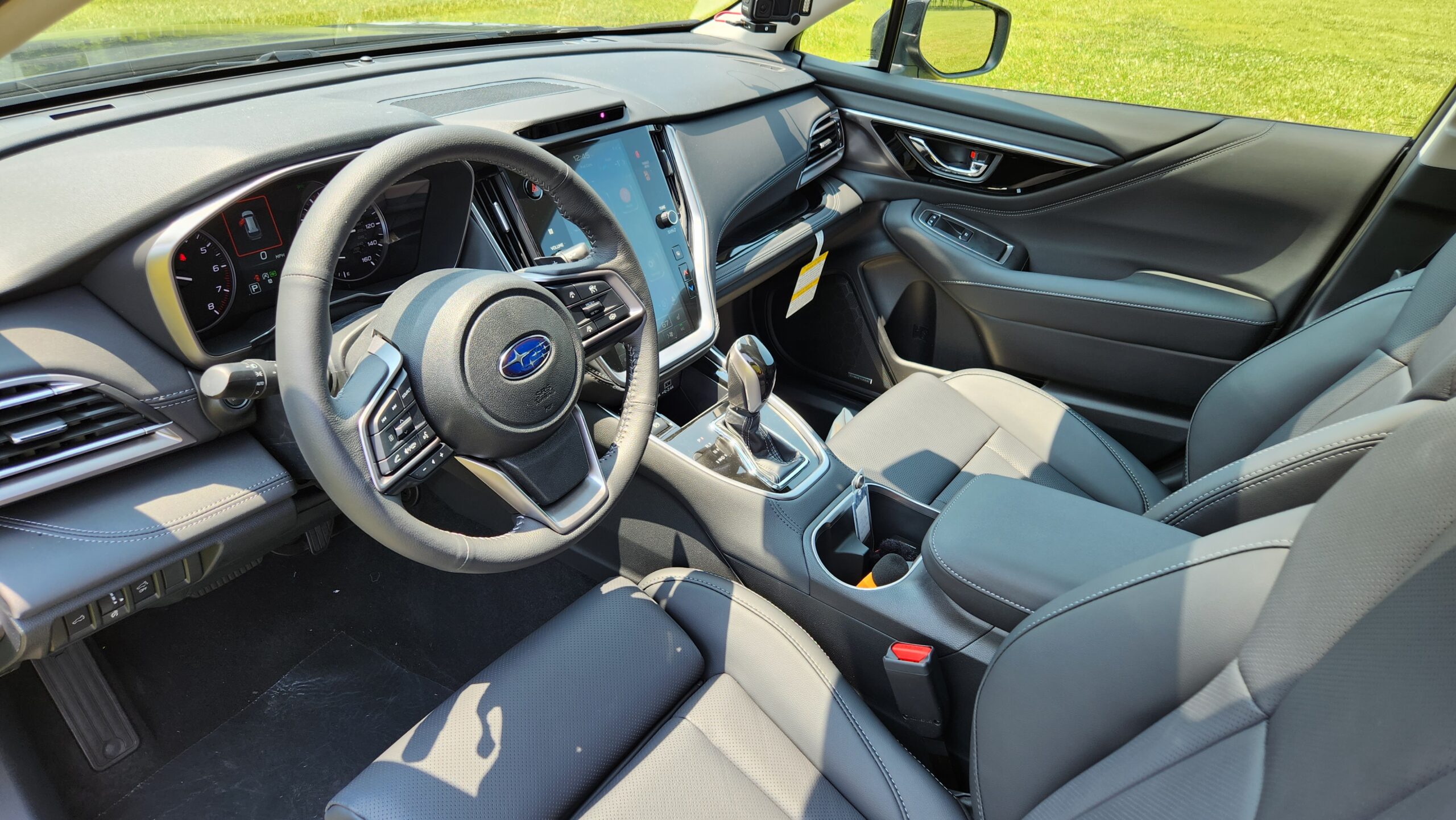
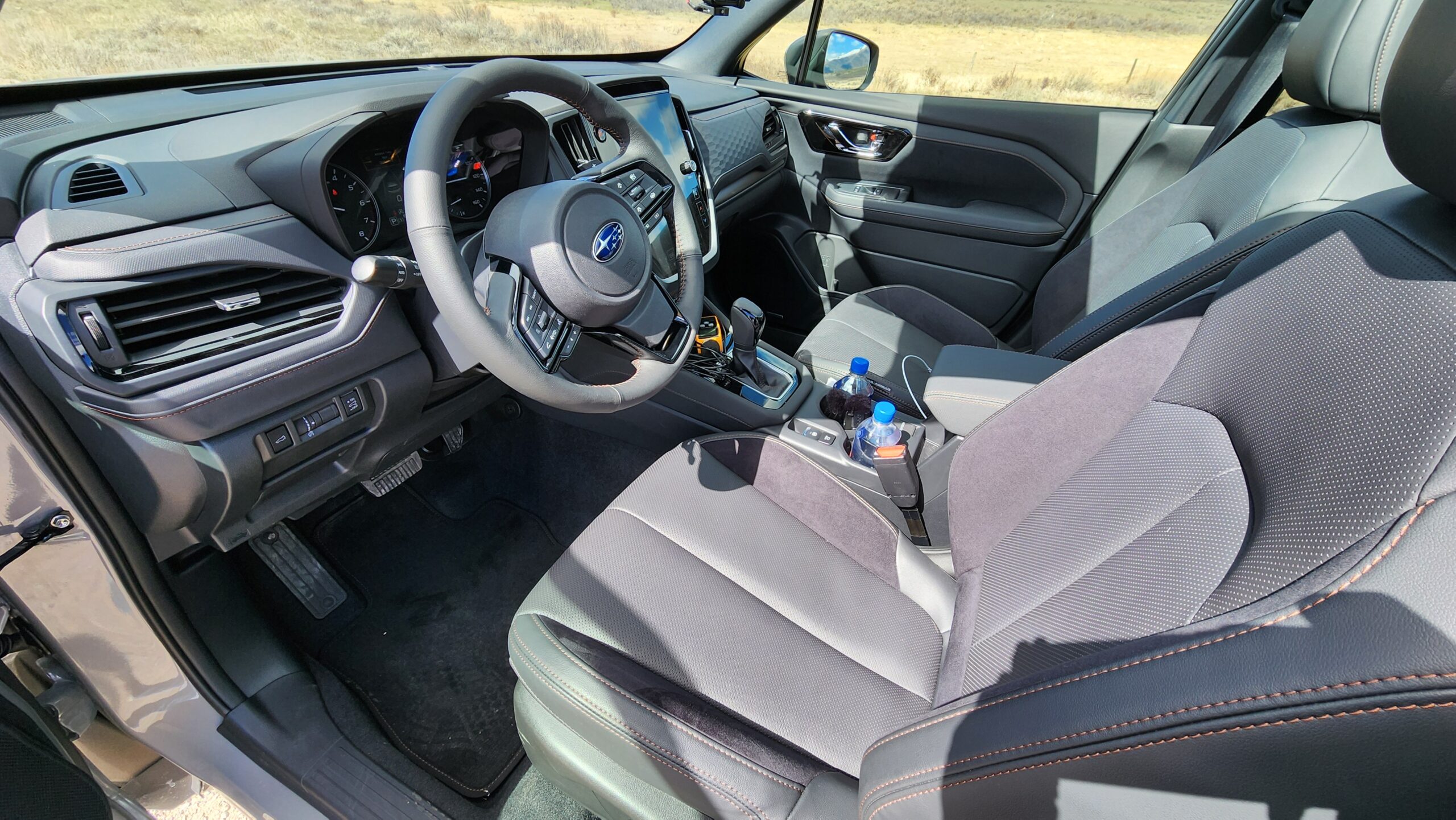
Interior Design
Approaching both SUVs, they have smart entry systems with the same nice key fobs. Remote start is also available via the app.
Both have sensors to unlock the doors and after opening, you’re going to see spacious, and surprisingly nice cabins.
While these two do have some similarities, the seats are quite different. They both have real leather; however, the Forester goes for a sportier edge with Alcantara suede accents. What you prefer is up to you, but know you’ll get a full leather seat on Outback.
As far as seat adjustability, the Outback has a 12-way adjusting seat with 4-way lumbar compared to the Forester’s 10-way seat and 2-way lumbar. Additionally, only the Outback has a manual thigh extension.
The Forester fights back, though, as it now includes seat ventilation for this Touring model for 2025. The Outback Limited only has heating, and both have 2-person memory.
Text: The Outback Touring also has seat ventilation standard.
Now once inside the cabins, let’s check out the major point category of material quality. While both are finished nicely, the more premium Outback takes the lead. It features loads of leatherette across the door trim, dash, and where your knees rest, giving it a surprisingly premium feel. The Forester utilizes a more scratchy and durable material instead, so the Outback will take the materials point.
So, there have been some differences so far, but the gauge cluster won’t be one of them. They both feature the same 4.2-inch multi-function display and analog gauges across all trims.
Neither have the option of a head up display or digital cluster and moving back, they both have heated, leather wrapped steering wheels, along with rain sensing wipers on the Forester.
Storage and Technology
Now it’s time to evaluate another major interior section: storage. This is a big deal for many families, and in this regard, we’ll call it a tie. The Forester has a deeper center console and a flatter, more usable front storage pad, however, it’s only the Outback that includes a passenger storage shelf.
Moving on, both have wireless phone chargers, and keep traditional shifters. When in reverse, you’ll see a big difference between these two. Only the Forester is offering a 360 camera, which is a new feature for 2025.
For climate, both have dual-zone automatic setups with physical buttons for the main temperature adjustment. And for audio, both have upgraded Harmon Kardon audio systems. Let’s take a listen.
Forester: 11-speakers Harmon Kardon
Outback: 12-speaker Harmon Kardon audio
Both have impressive sound quality for the money and are indistinguishable in this regard.
But let’s talk tech. People demand good tech nowadays and since the Forester got a major overhaul this year, both now have the same large 11.6-inch display. That also means they have the most up-to-date software with integrated navigation systems plus wireless Apple CarPlay and Android Auto.
As we wrap up the front of the cabins, both have auto-dimming mirrors with HomeLink remotes, but only Forester has the rear camera functionality as equipped.
One of the other interesting differences is the moonroof situation. The Forester has an oversized panoramic-ish moonroof that opens wide, compared to the standard size setup on Outback.
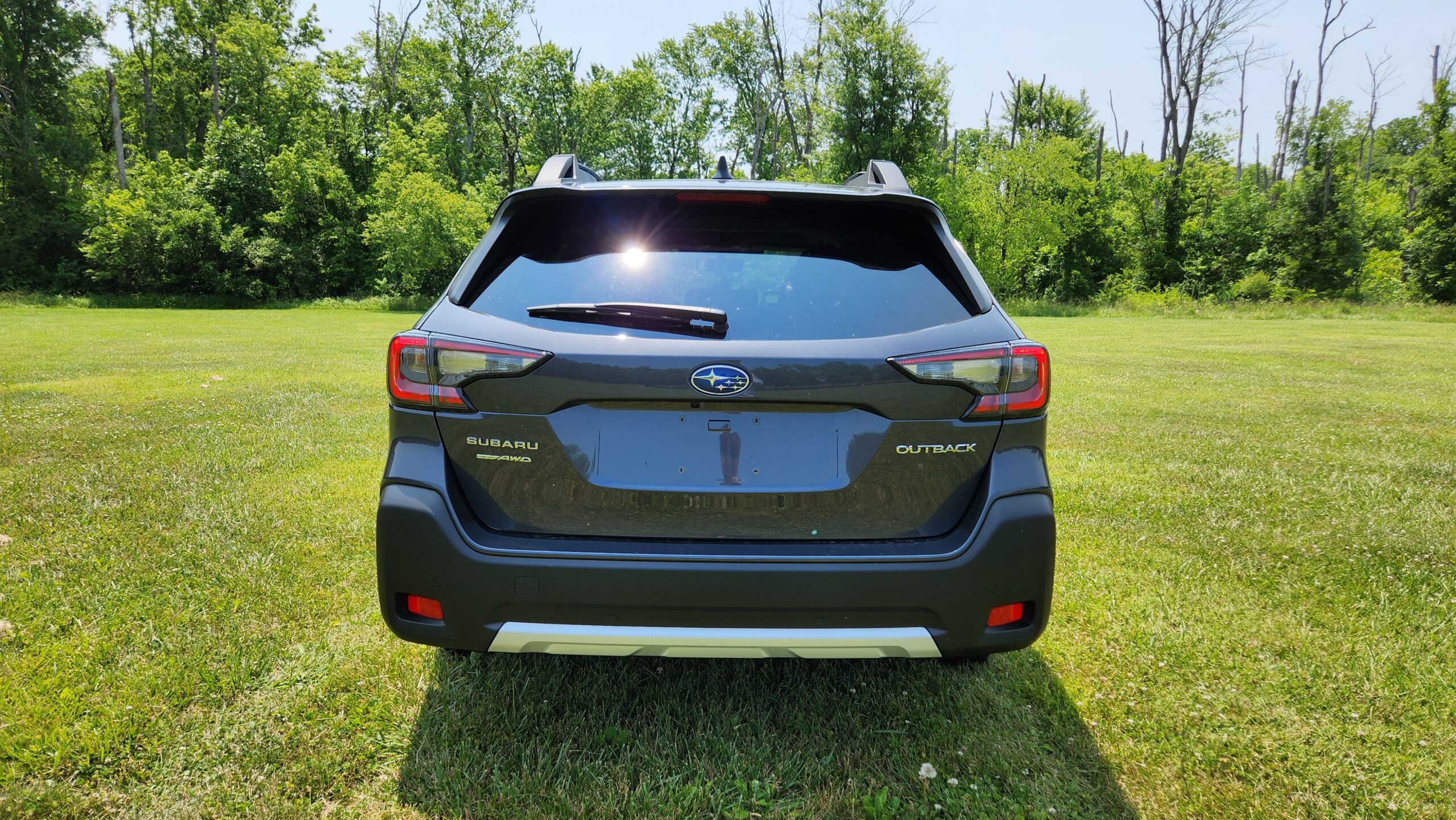
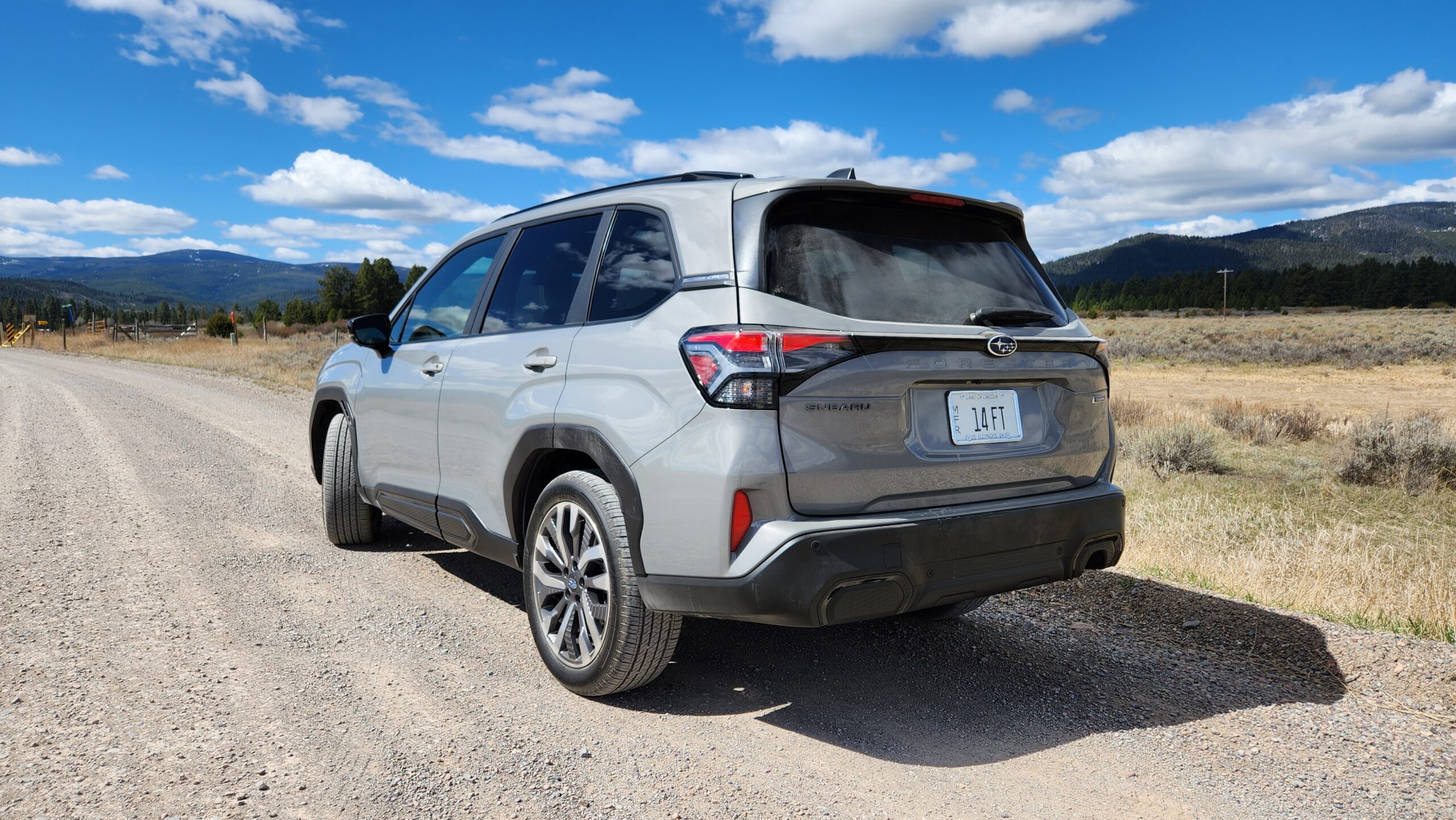
Rear Seats and Cargo
Heading to the rear areas, you might think the Outback would be substantially larger than the Forester given the exterior size advantage. However, you’ll be surprised, since legroom and headroom specs are nearly identical to each other at about 40 inches.
Forester: Legroom: 39.4 inches | Headroom: 39.6 inches
Outback: 39.5 inches legroom | 39.1 inches of headroom
You’ll also find that the rear features are identical as well. Both are nicely equipped with vents, two USB ports, and heated rear seats.
How about cargo space, though? To get back there, both have power tailgates with hands-free ability – new to the Forester this year, and once they open, you’ll find a large 17% advantage in the Outback behind the 2nd row of seats. The Outback still pulls ahead with the seats folded, being about 9% larger as a maximum.
Outback: 32.6 cubic feet with seats up | 75.6 cubic feet with folded
Forester: Behind 2nd row: 27.5 cu. ft | Maximum: 69.1 cu. ft (w/ pano)
Both models feature a spare tire, and they also include easy buttons to fold the second row without having to stretch too far.
But this has certainly been a tight race, so now it’s time to take this fight out on the road and see how they compare!
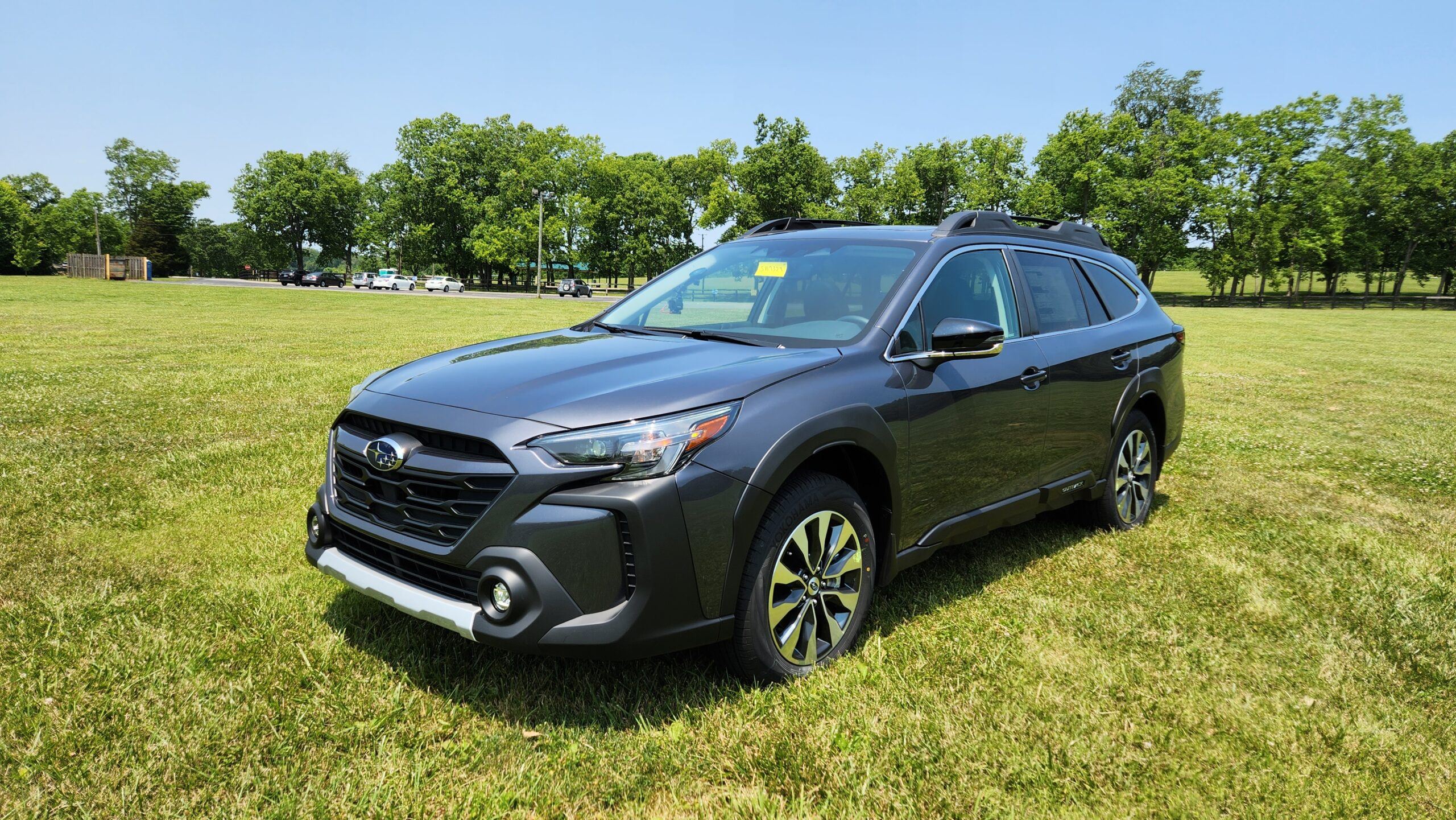

Powertrains
So, as you’ve seen already, these two have many similarities but also several differences. As tested today, both are rocking the same 2.5L Boxer 4-cylinder making about 180 horsepower. That, of course, means they have the same overall performance out on the road which is decent for SUVs of this size.
Outback: 2.5L BOXER 4-cylinder: 182 hp | 176 lb.ft
Forester: 2.5L Boxer-4: 180 hp | 178 lb.ft
I do also want to take a second to acknowledge that Subaru is promising an upcoming Hybrid for the Forester which is not available currently. Additionally, if you want more power, you can get that in the Outback XT with its turbocharged engine. Those choices award them each a half point.
Moving on, for transmissions, both are using CVTs paired to Subaru’s famous symmetrical AWD system as standard equipment.
Test Drive and Fuel Economy
Now let’s talk about an important part for any SUV; the ride quality. In this area, both impress and have great ride quality and comfortable seats.
But that aside, how much noise penetrates the cabins? We get a sound level reading on all the cars we review on Car Confections, which you can find at carconfections.com/sound-level-readings, and both tested within a half decibel of one another despite the Forester being tested in Montana.
Outback: 57.1 dB @ 55 MPH
Forester: 57.6 dB @ 55 MPH
Lastly, the fuel economy comes in within spitting distance of one another. The Forester comes in at 1 MPG better combined and like we mentioned previously, it will have an upcoming hybrid that should get even better fuel economy.
Outback: 26/32/28 MPG
Forester: 26/33/29 MPG
2025 Subaru Forester vs. 2024 Subaru Outback winner!
So, there you have it; the objective winner is the RAV4, but let’s discuss who should be “your” winner…
Forester:
- Advanced tech – 360-degree camera
- Additional features for the money – ventilated seats
- More traditional SUV design
Outback:
- More premium cabin materials
- Better cargo capacity
- Available XT powertrain for more performance
Now we want to know your opinions, so make sure to head to the comment section and let us know which one you would pick!
Thanks for joining us for another Car Confections Comparison! We’ll catch you next time as we sample the latest automotive delicacies!
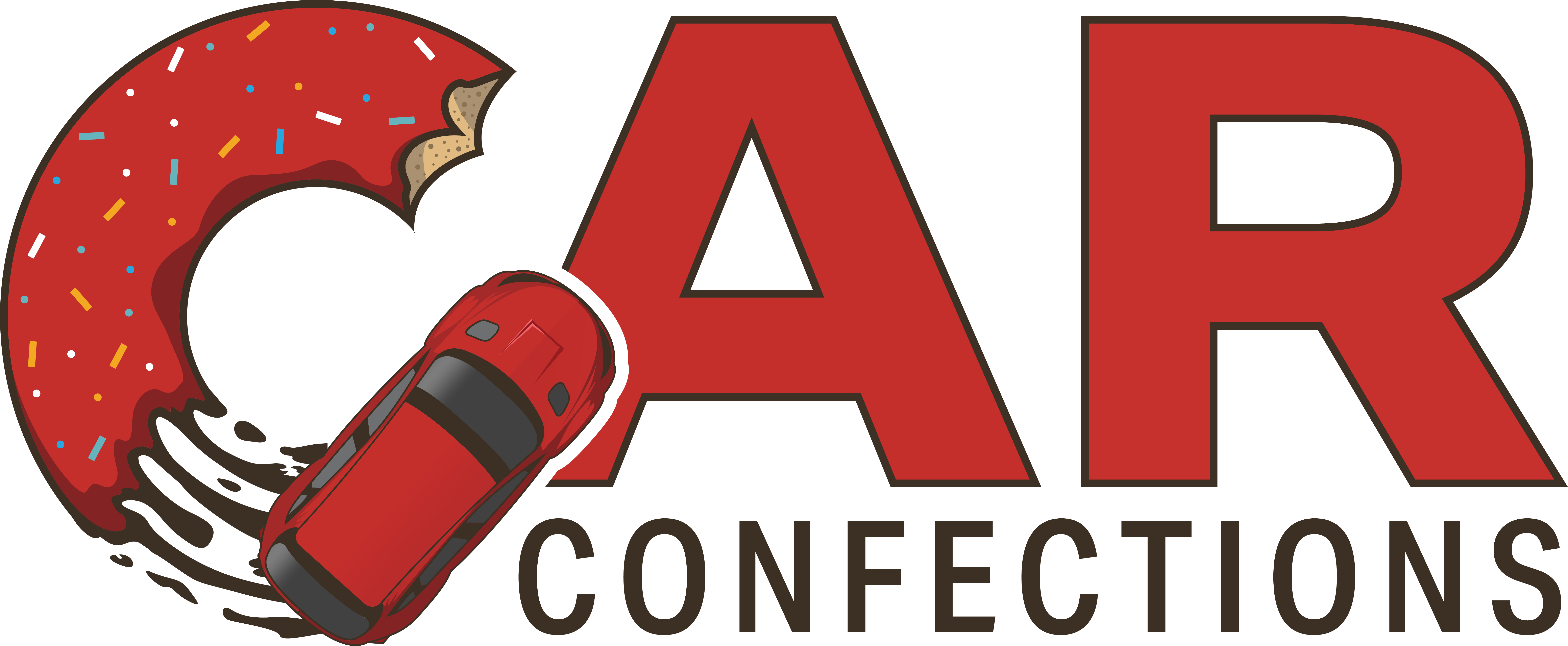

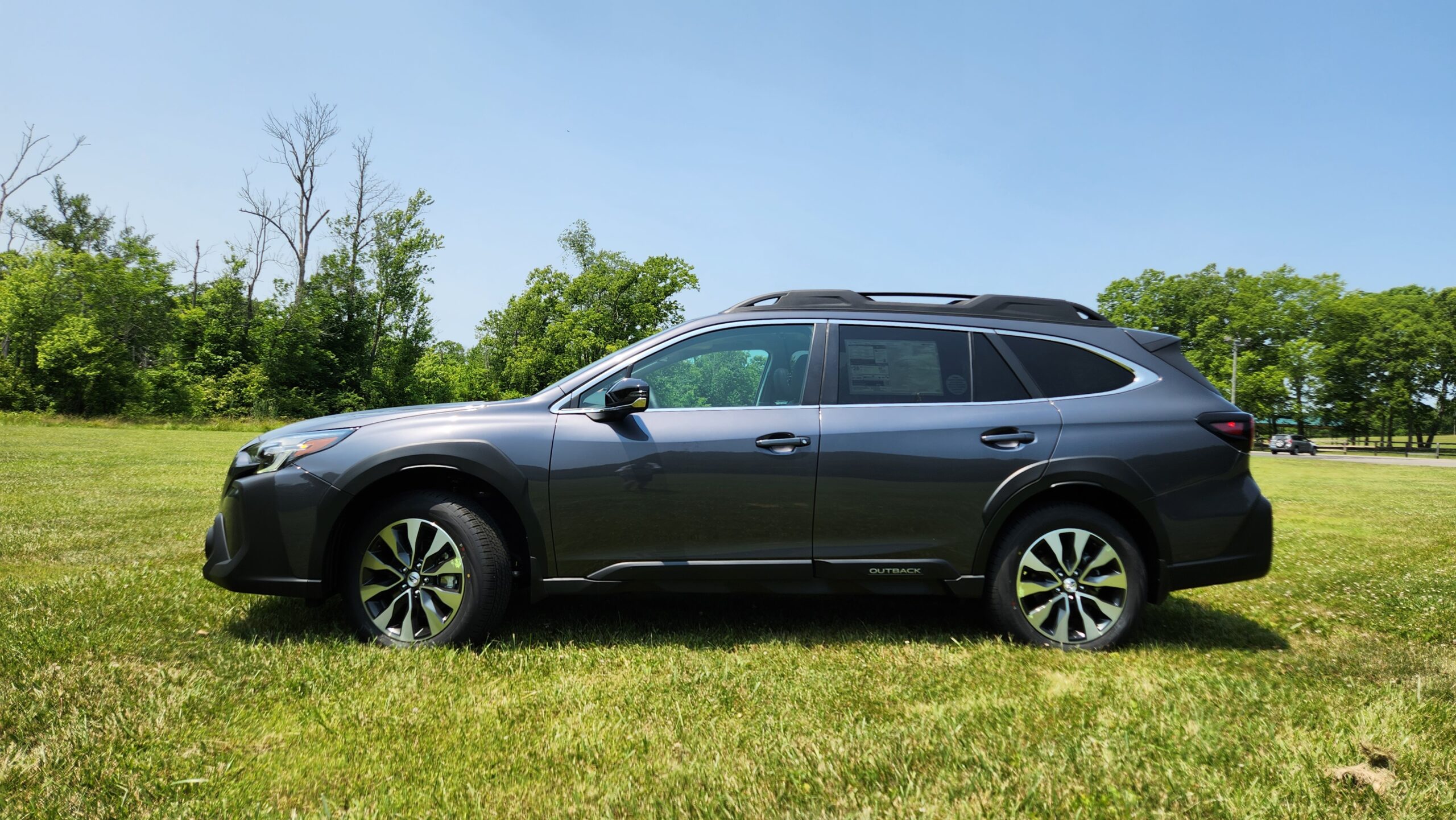

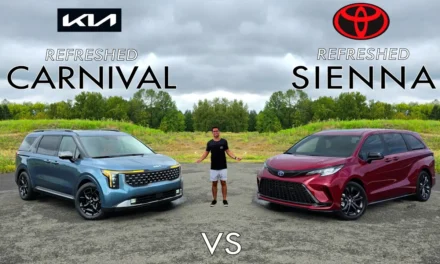

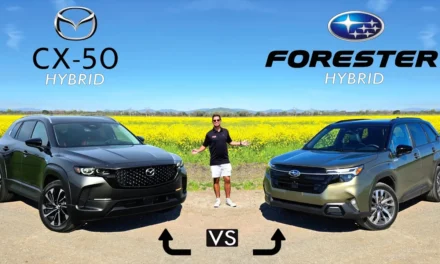
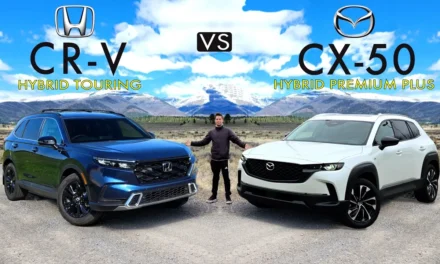



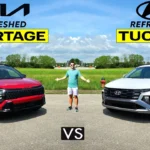


Will there be a PHEV version available in 2025?
As far as we know, Subaru only plans on offering a standard Hybrid Forester in the coming years, with no plan for a PHEV.